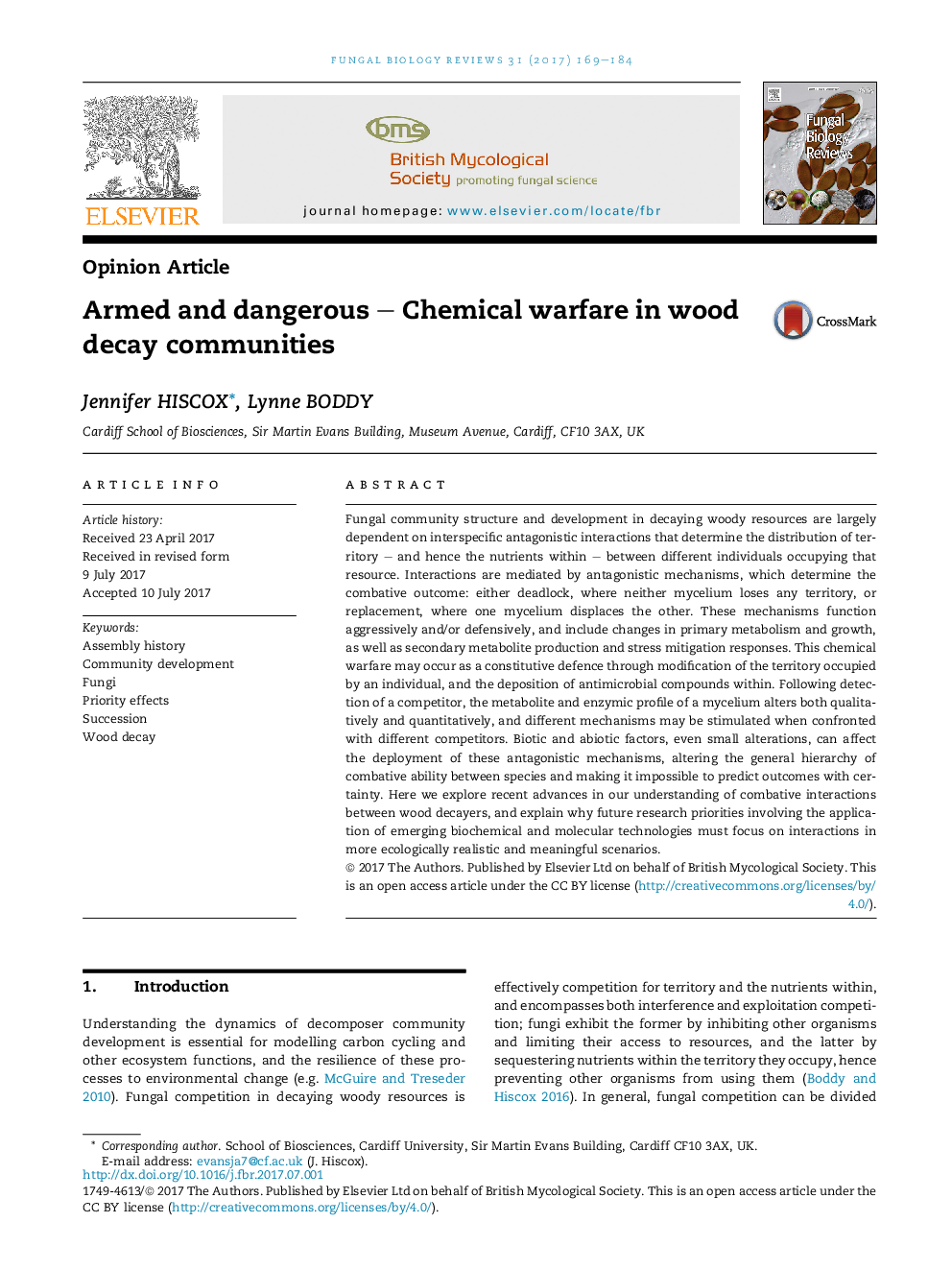| کد مقاله | کد نشریه | سال انتشار | مقاله انگلیسی | نسخه تمام متن |
|---|---|---|---|---|
| 5532642 | 1549959 | 2017 | 16 صفحه PDF | دانلود رایگان |
- Antagonism largely determines fungal community structure in decaying wood.
- Antagonistic mechanisms include chemical warfare-production of antimicrobials.
- Enzymes, changes in growth, and stress mitigation responses are also crucial.
- Biotic and abiotic factors can alter the general hierarchy of combative ability.
Fungal community structure and development in decaying woody resources are largely dependent on interspecific antagonistic interactions that determine the distribution of territory - and hence the nutrients within - between different individuals occupying that resource. Interactions are mediated by antagonistic mechanisms, which determine the combative outcome: either deadlock, where neither mycelium loses any territory, or replacement, where one mycelium displaces the other. These mechanisms function aggressively and/or defensively, and include changes in primary metabolism and growth, as well as secondary metabolite production and stress mitigation responses. This chemical warfare may occur as a constitutive defence through modification of the territory occupied by an individual, and the deposition of antimicrobial compounds within. Following detection of a competitor, the metabolite and enzymic profile of a mycelium alters both qualitatively and quantitatively, and different mechanisms may be stimulated when confronted with different competitors. Biotic and abiotic factors, even small alterations, can affect the deployment of these antagonistic mechanisms, altering the general hierarchy of combative ability between species and making it impossible to predict outcomes with certainty. Here we explore recent advances in our understanding of combative interactions between wood decayers, and explain why future research priorities involving the application of emerging biochemical and molecular technologies must focus on interactions in more ecologically realistic and meaningful scenarios.
Journal: Fungal Biology Reviews - Volume 31, Issue 4, September 2017, Pages 169-184
